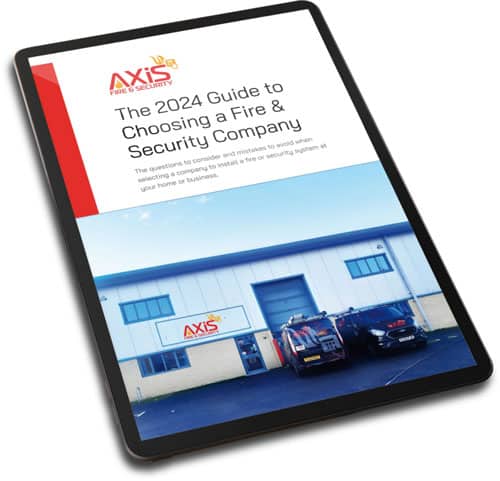Fire alarm systems are essential to protecting a building from the potential dangers posed by fire, smoke, and heat. A fire alarm installation requires careful planning and consideration of the particular requirements for the building or structure.
There are several types of fire alarm systems available, including conventional systems, addressable systems, and wireless systems.
UK Fire Safety Standards
UK standards require that a fire alarm system be regularly tested and maintained in order to keep it functioning optimally. This includes routine testing of the sensors, detectors, control panels, wiring and other components of the system.
It is important to ensure that all parts of the system are correctly connected and functioning properly. Only an experienced technician should install a fire alarm system and they must be qualified and certified by the relevant authorities.
The Building Regulations 2010 provide a list of minimum requirements for fire safety in buildings. This applies to both brand new buildings and if you change or add to the purpose of an existing building.
Fire Alarm Maintenance
Proper maintenance is essential to ensure that the fire alarm system continues to work correctly and operates at peak efficiency. Regular servicing should include testing all of the sensors, detectors, wiring and other components.
The control panels must also be tested to ensure they are functioning correctly. All equipment should be checked for any signs of damage or wear and tear, which could have an impact on its performance.
It is important to note that a fire alarm system will only function as intended if it is regularly serviced and maintained by qualified personnel. This includes carrying out regular checks to make sure that all parts of the system are working properly and in accordance with UK Fire Safety Standards.
The British Standards BS 5839 provides guidelines for designing, installing, testing, and maintaining fire alarm systems in the UK.
This standard specifies the functions required for each type of fire alarm system and provides recommendations for the placement of smoke detectors and other components within a business facility.
Fire Alarm Installation Placement
The placement of fire alarms within a building or structure is also important for optimum performance. The location of the detectors and sensors should be carefully considered in line with any local health and safety regulations.
All fire alarms should be clearly visible, easily accessible, and suitable for the type of environment they are being installed in.
Fire alarm systems must also be placed away from areas that may cause false alarms due to steam, dust, smoke or other environmental conditions.
The Building Regulations 2010 contain a document called Approved Document B that provides specific guidance on fire safety in buildings, including the proper methods for installing fire alarms.
Penalties for Poor Fire Safety
Not following fire safety regulations can lead to a penalty or imprisonment, with fines potentially reaching up to £5,000. Fines of any amount and a prison sentence of up to two years may be imposed as major punishments.
As the building owner, you are in charge of making sure our business is safe from fire. But even if you rent a business space, you and your landlord are both responsible for fire safety.
Types of Fire Alarms
Conventional alarms use zones to divide a building, with detectors and call points in each zone connected on a separate circuit. The panel can detect which circuit has been triggered by a detector or call point, and it can identify the zone from which the fire alarm has come.
In this way, the personnel can manually search the indicated zone to find the triggered device.
Addressable alarms overcome the limitations of conventional ones as during installation, each fire detector or call point is given an electronic code called an ‘address’ which is unique to that particular device.
To communicate with the connected addressable devices, the control panel uses a unique address. By interrogating each device, it is possible to determine its status, including whether it is working properly and the amount of smoke or heat it is currently sensing.
This allows for the identification of the exact device that has been triggered in an alarm or fault status.
About Axis Fire & Security
Axis Fire & Security offers comprehensive fire and security services to commercial, public sector, and residential customers across the UK.
Our focus is to offer dependable and efficient fire and security solutions to our customers.
We can offer you a complete solution that meets all your needs, whether you require protection from fires or intruders, or simply want to feel reassured that your property is securely protected.
Contact Us
To get more information about our various fire alarm installaiton solutions, including the available fire alarm systems, or to schedule a complimentary site survey, please contact us today.

